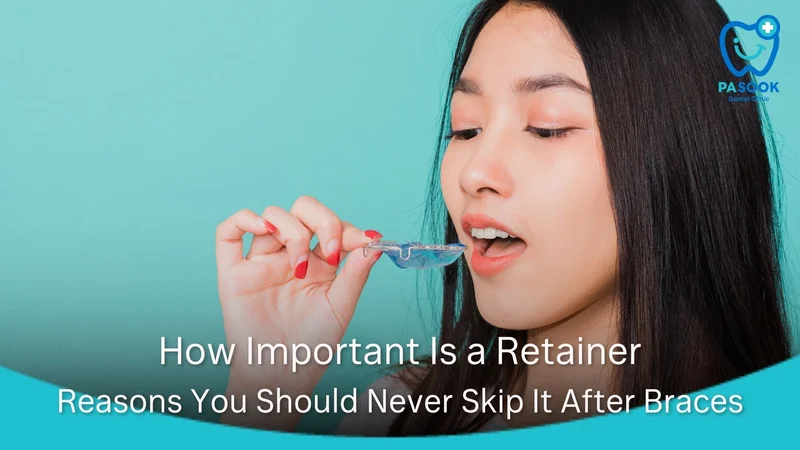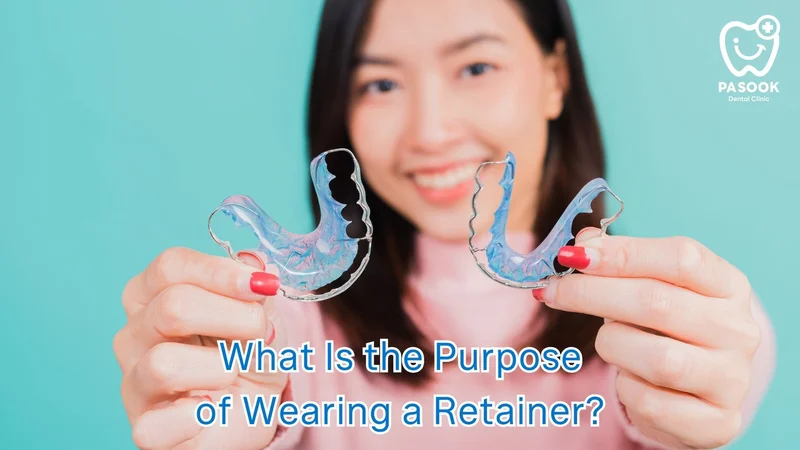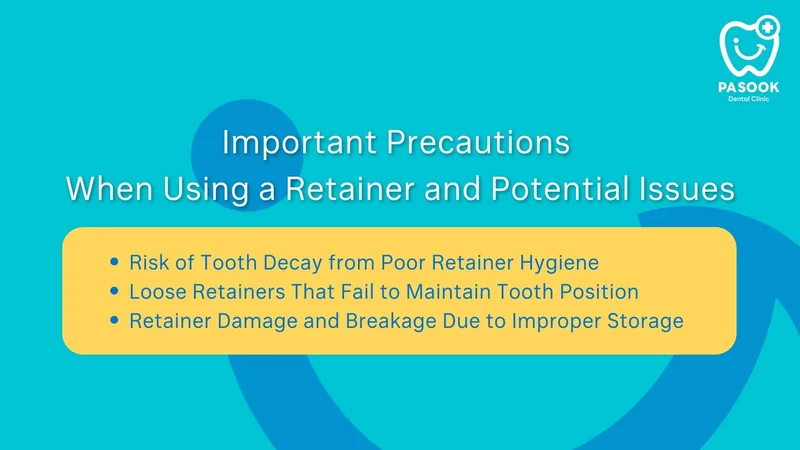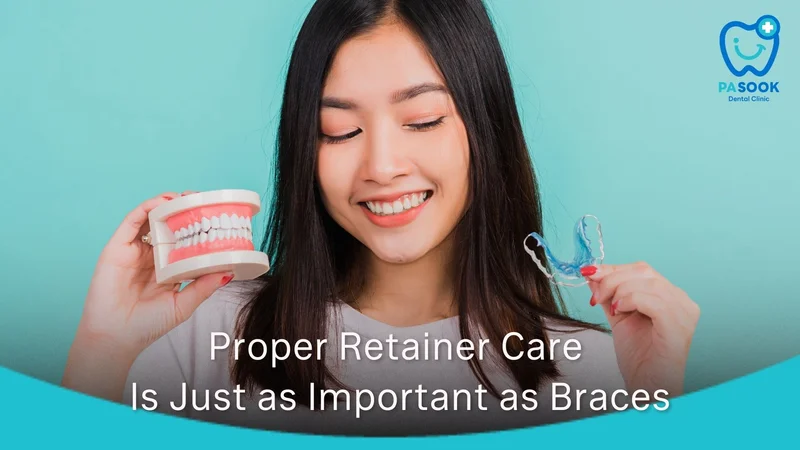Retainers: The Unsung Hero of Orthodontic Treatment You Shouldn’t Ignore

How Important Is a Retainer? Reasons You Should Never Skip It After Braces

Table of Contents
1.What Is a Retainer and Why Is It Needed After Braces?
3.What is the Purpose of Wearing a Retainer?
4.Important Precautions When Using a Retainer and Potential Issues
5.Proper Retainer Care Is As Important As Braces
Retainers may look like a small, final step in your orthodontic journeybut they play a vital role in keeping your teeth in their new positions after braces. Without a retainer, your teeth can slowly shift back over timea process known as orthodontic relapse.
Many patients mistakenly believe that once the braces are off, their treatment is complete. However, every orthodontist knows that retainers are essential for maintaining results. This is because the ligaments and bones around your teeth need at least 12 years to fully stabilize.
What Is a Retainer and Why Do You Need One After Braces?
A retainer is a dental appliance designed to maintain the position of your teeth after orthodontic treatment. Its main role is to prevent your teeth from shifting back to their original positions or developing new alignment issues.
Wearing a retainer is not an optional stepits a critical phase in post-orthodontic care. Even though your teeth may look perfectly aligned after braces, the surrounding bone and soft tissues are still adjusting. Without a retainer, these structures may not stabilize properly, leading to unwanted tooth movement.
Thats why a retainer isnt just a simple accessoryits a key to preserving your orthodontic results. Skipping your retainer for even a few months can undo years of progress and bring back the very problems you worked hard to correct.
What Types of Retainers?
Retainers generally fall into two main categories:
- Hawley Retainer: Made of acrylic combined with a metal wire, this retainer is durable and can be adjusted slightly to fine-tune tooth positioning. Its often recommended for patients with a higher risk of teeth shifting or those who require more control after orthodontic treatment.
- Clear Retainer: Made from transparent plastic molded precisely to fit your teeth, this type is popular among patients who prioritize aesthetics and want a nearly invisible option thats comfortable for everyday use.
Your orthodontist will evaluate your specific case and recommend the retainer type best suited to your needs to ensure optimal treatment outcomes.
What Is the Purpose of Wearing a Retainer?

The primary purpose of a retainer is to maintain the alignment and position of your teeth after braces. It prevents your teeth from moving backward or shifting away from the corrected bite.
Additionally, a retainer allows the surrounding tissuesincluding ligaments, gums, and jawboneto fully adapt to the new tooth positions. Without it, even small movements like slight rotations or shifts can occur over time, even without chewing forces.
Wearing a retainer is not just about preventing tooth movementits a true continuation of orthodontic treatment. Think of it as the crucial final step that secures your results as much as the braces themselves.
Important Precautions When Using a Retainer and Potential Issues

Although retainers dont apply the same forces as braces, proper care and usage are essential. Neglecting these can lead to oral health problems and reduce the effectiveness of your orthodontic treatment.
Risk of Tooth Decay from Poor Retainer Hygiene
If not cleaned properly, retainers can become breeding grounds for bacteria, plaque, and food debris, significantly increasing the risk of tooth decay. This is especially true if you dont brush your teeth after meals or fail to rinse your retainer each time you remove it. Good oral hygiene habits must go hand in hand with retainer use to prevent setbacks in your treatment.
Loose Retainers That Fail to Maintain Tooth Position
A common issue is that retainers may become loose or no longer fit snugly as they did initially. This can happen if the retainer isnt worn consistently or if its bent or distorted. A loose retainer allows teeth to shift gradually and unnoticed, potentially leading to the need for orthodontic retreatmentresulting in wasted time, money, and effort.
Retainer Damage and Breakage Due to Improper Storage
Especially clear plastic retainers are somewhat fragile. Improper storagesuch as leaving them in hot places or not using the protective casecan cause them to warp or break. Many patients accidentally leave retainers on tables or wrapped in tissue, resulting in damage or loss. A damaged retainer should never be worn and must be replaced promptly by your dentist to ensure continued protection.
Proper Retainer Care Is Just as Important as Braces

Retainers play a crucial role in maintaining your dental health long after your braces come off. Thats why taking good care of your retainer requires attention and routine.
Clean your retainer regularly using mild soap and water or a specialized cleaning solution. Avoid using toothpaste for cleaning, as its abrasive particles can scratch and wear down the retainers surface.
Small habits, like always storing your retainer in its case and bringing it to your dentist for regular check-ups, can significantly extend its lifespan and ensure your orthodontic results stay effective.
PASOOK Dental Clinic Provides Expert Care and Accurate Orthodontic Guidance

At PASOOK Dental Clinic, we believe dental care doesnt end when your braces come off. Our dentists closely monitor your progress after orthodontic treatment, focusing especially on the proper use and maintenance of retainers.
Our specialists carefully assess which type of retainer best suits your individual needs and provide expert advice on how to care for it. This ensures your orthodontic results remain stable and effective for the long term.


